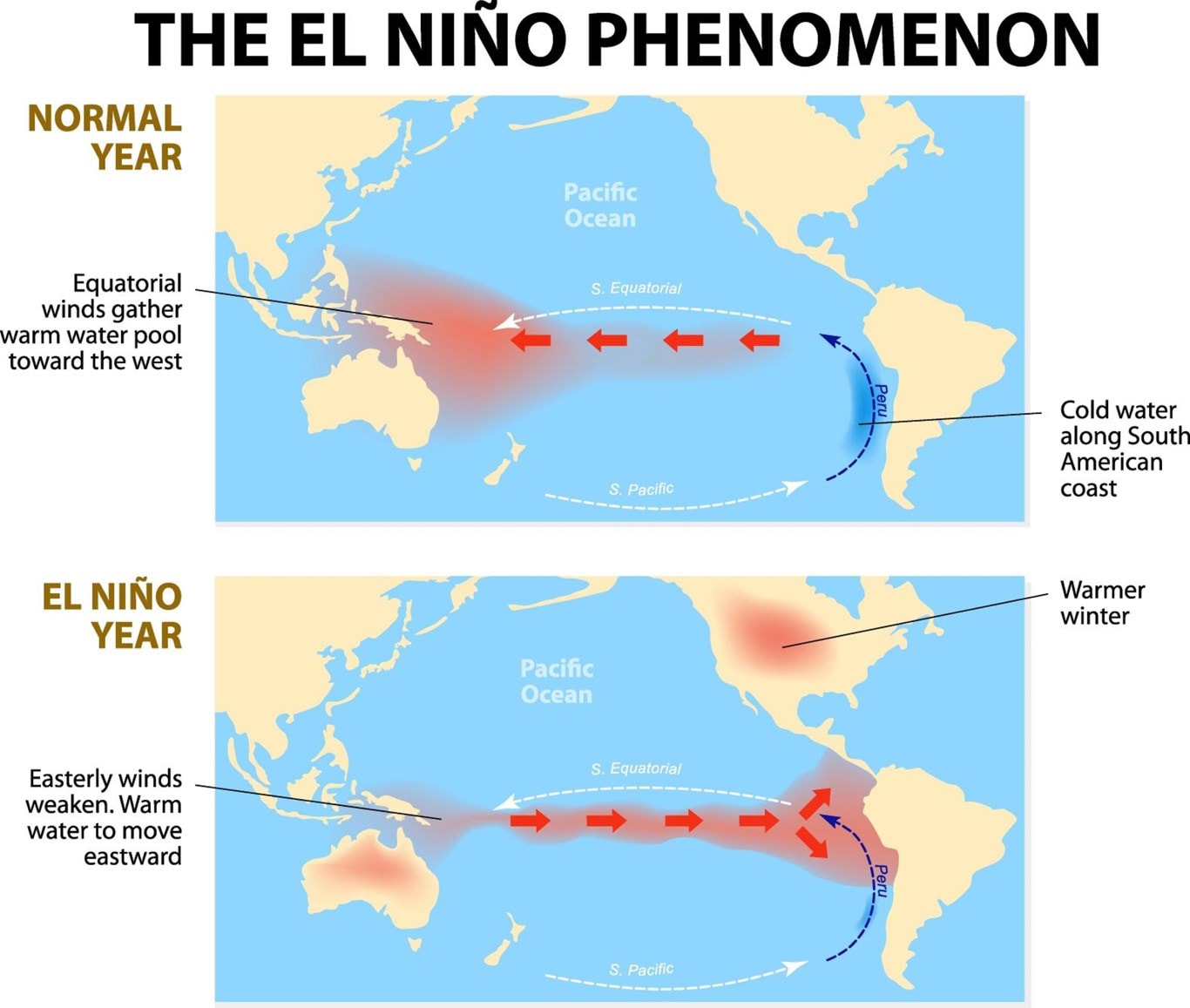Peru – Northern and Central Regions Experiencing Unusually High Rainfall.
The Club's correspondent, Overseas Service Agency S.A., has informed us that the high levels of rainfall, which caused widespread flooding and landslides within Peru's northern and central coastal regions, are set to continue until May 2023.
The local authorities have indicated that there will be a continuation of the unusually heavy rains within Peru due to the development and now present warm ocean current known as El Niño.
El Niño is a natural phenomenon that occurs when warm water in the Pacific Ocean moves eastward towards South America, disrupting the typical patterns of ocean and atmospheric circulation in coastal regions of Peru and other parts of South America.
Consequently, during an El Niño event, the coastal region of Peru typically experiences increased rainfall and higher temperatures, potentially leading to flooding, landslides, and other natural disasters, which can cause significant damage to infrastructure, homes, and crops.
In addition to the direct impacts on land, El Niño can potentially affect the fishing industry in Peru's coastal regions because the warmer waters can disrupt the normal patterns of marine life, causing fish populations to move or decline. This can cause significant economic impacts on the fishing communities reliant on these activities.

The recent and further predicted heavy rains, floods, and mudslides could impact regional shipping activities because of the disruption to the flow of goods and services, causing delays and damage to infrastructure.
As regional rivers and tributaries overflow from flooding, it can lead to increased water levels, debris, and stronger currents, possibly making it difficult for ships to enter and exit ports, especially where the harbour basin directly connects to a river. These adverse effects are generally more predominant within the coastal ports as they are often located in low-lying areas near the coast, making them highly susceptible to the unusual season of heavy rains.
Other ways that heavy rains, floods, and mudslides can affect shipping is by damaging the transportation infrastructure, port facilities and cargo handling machinery, which can disrupt the flow of goods to and from ports causing a backlog of cargo waiting to be shipped, resulting in delays and exposing any cargo stored in open storage areas to excessive wetting. Furthermore, it can reduce the capacity of ports and make it more difficult to load and unload cargo, thereby slowing down the turnaround times for ships and disrupting the trade flows and supply chains.
Overseas Service Agency S.A. advice can be found here.
